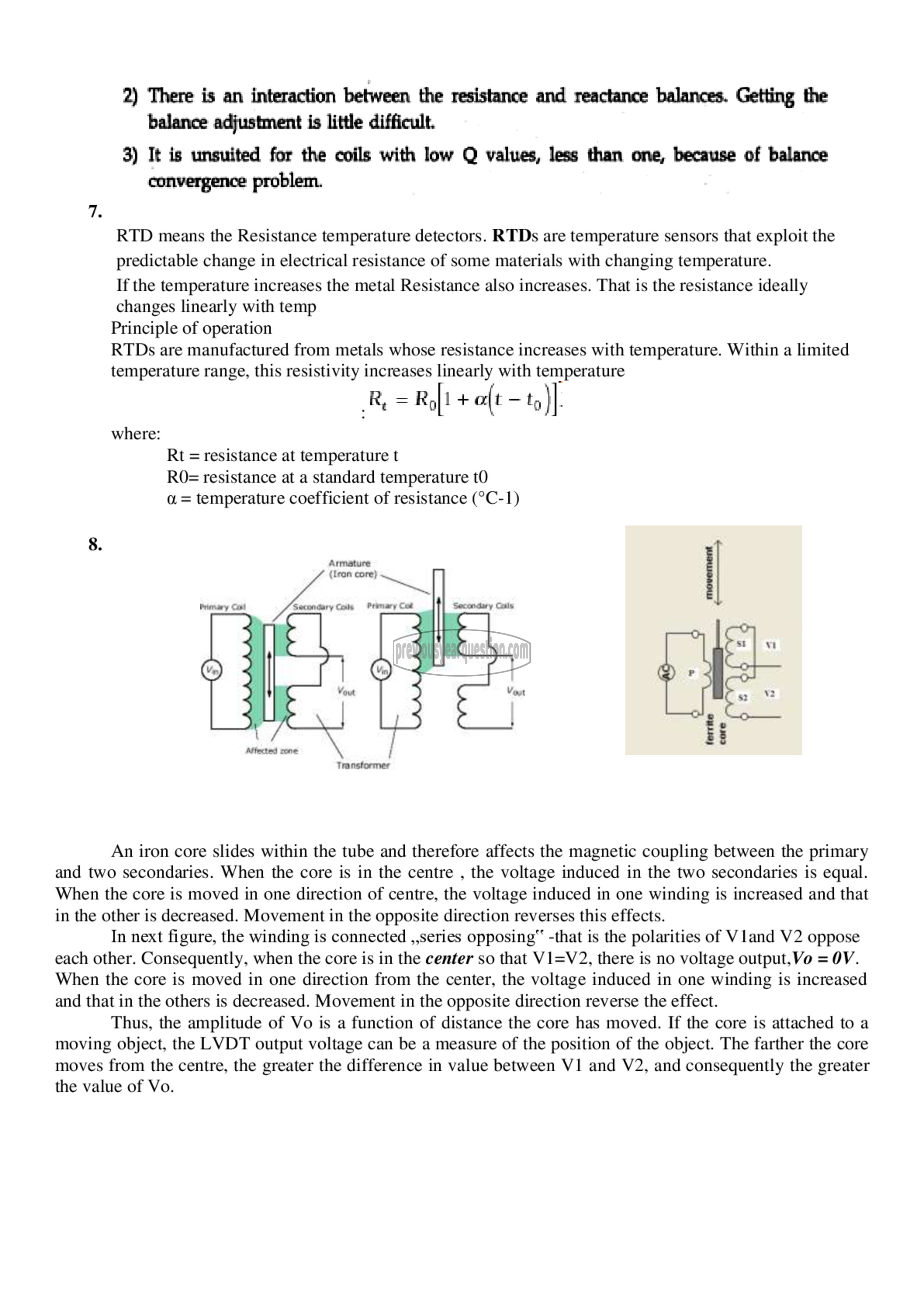APJ ABDUL KALAM TECHNOLOGICAL UNIVERSITY Previous Years Question Paper & Answer
Semester : SEMESTER 4
Subject : Measurements and Instrumentation
Year : 2018
Term : MARCH
Scheme : 2015 Full Time
Course Code : EE 208
Page:6
2) There is an interaction between the resistance and reactance balances. Getting the
balance adjustment is little difficult.
3) It is unsuited for the coils with low 0 values, less than one, because of balance
convergence problem.
RTD means the Resistance temperature detectors. RTDs are temperature sensors that exploit the
predictable change in electrical resistance of some materials with changing temperature.
If the temperature increases the metal Resistance also increases. That is the resistance ideally
changes linearly with temp
Principle of operation
RTDs are manufactured from metals whose resistance increases with temperature. Within a limited
temperature range, this resistivity increases linearly with temperature
(२, = زارط வடி]
where:
Rt = resistance at temperature t
RO= resistance at a standard temperature 10
0 = temperature coefficient of resistance (°C-1)
8.
Armature
(1೧೦೧ core} ong
Primary اس tus மேஷ Primary Cot Secondary Calls
5
Affected 2006 |
An iron core slides within the tube and therefore affects the magnetic coupling between the primary
and two secondaries. When the core is in the centre , the voltage induced in the two secondaries is equal.
When the core is moved in one direction of centre, the voltage induced in one winding is increased and that
in the other is decreased. Movement in the opposite direction reverses this effects.
In next figure, the winding is connected ,,series opposing" -that is the polarities of V land V2 oppose
each other. Consequently, when the core is in the center so that ,۷2۔۷1۱ there is no voltage output,Vo = OV.
When the core is moved in one direction from the center, the voltage induced in one winding is increased
and that in the others is decreased. Movement in the opposite direction reverse the effect.
Thus, the amplitude of Vo is a function of distance the core has moved. If the core is attached to a
moving object, the LVDT output voltage can be a measure of the position of the object. The farther the core
moves from the centre, the greater the difference in value between V1 and V2, and consequently the greater
the value of Vo.
